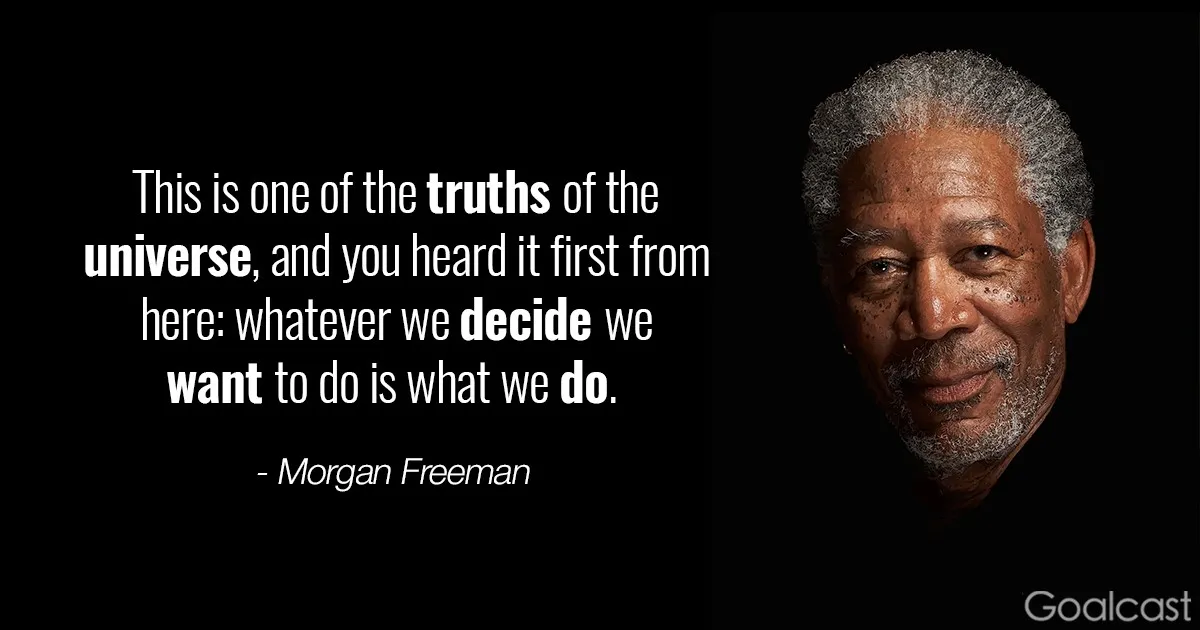We see what we want to see because our perceptions are influenced by our beliefs, desires, and expectations. This phenomenon occurs due to the brain’s selective attention and filtering mechanisms, which prioritize information that aligns with our preexisting beliefs and desires.
Our brain unconsciously directs our focus towards information that confirms our biases and filters out conflicting or contradictory information. This process of selective perception allows us to maintain consistency and coherence in our worldview, but it can also lead to confirmation bias and prevent us from objectively evaluating new or divergent information.
Consequently, our perceptions are often shaped by what we want to see rather than what may objectively be present.
The Role Of Perception
Perception plays a crucial role in shaping what we see, as our minds tend to focus on what we want or expect to see, influencing our interpretation of reality. This selective perception can impact our decision-making and overall understanding of the world around us.
The Process of PerceptionThe Process Of Perception
Perception is the way we interpret and make sense of the world around us. It plays a vital role in shaping our understanding of reality and influences how we interact with everything and everyone in our environment. Understanding the process of perception allows us to gain insight into why we see what we want to see.
Perception begins with the reception of sensory information through our five senses: sight, hearing, taste, smell, and touch. These sensory inputs are then processed by our brain, which organizes and interprets the information based on our past experiences, beliefs, and expectations.
Our perception is not merely a passive reflection of reality but rather an active construction influenced by various factors. It is an ongoing and dynamic process that is shaped by our cognitive abilities, emotions, and cultural background.
Perceptual FiltersPerceptual Filters
One of the key factors that influence our perception is the presence of perceptual filters. These filters act as a lens through which we interpret and make sense of the information around us. They are influenced by our beliefs, attitudes, values, and biases.
Perceptual filters can lead us to selectively pay attention to certain aspects of our environment while filtering out others. They can also influence how we interpret and assign meaning to the information we receive. For example, if we hold a positive attitude towards a particular person, we may interpret their actions in a favorable light despite any contradictory evidence.
Understanding our perceptual filters and being aware of their influence can help us better understand why we see what we want to see. It allows us to challenge our preconceived notions and biases, enabling us to have a more objective view of the world around us.

Credit: www.pexels.com
Cognitive Biases
Cognitive biases shape our perception, leading us to see what we want to see. Our minds have a tendency to filter information, often resulting in biased interpretations and selective attention. Understanding these biases helps us make more objective judgments and decisions.
Confirmation Bias
Cognitive biases, or the unconscious shortcuts our brain takes when processing information, greatly influence the way we perceive the world around us. One such bias is confirmation bias, which leads us to interpret and seek out information that supports our existing beliefs, while simultaneously disregarding or downplaying contradictory evidence.
This bias is rooted in our desire for cognitive consistency. Our brains naturally gravitate towards ideas and viewpoints that align with our preconceived notions, as it gives us a sense of validation and security. Whether it’s politics, religion, or personal relationships, confirmation bias can significantly impact our perceptions and decisions.
Confirmation bias operates subconsciously, often without our awareness. It’s important to recognize this bias in ourselves in order to overcome it. By actively seeking out alternative perspectives and challenging our own beliefs, we can begin to break free from the constraints of confirmation bias.
Selective Attention
Another cognitive bias that affects our perception is selective attention. Our brains have limited capacity to process information, so we naturally filter out irrelevant or mundane stimuli in order to focus on what we deem important. However, this filtering process can lead us to miss important details or alternative viewpoints.
With selective attention, our focus tends to be directed towards information that aligns with our current interests, values, or goals. This can create a narrow view of the world, as we become unaware of other perspectives and possibilities.
Recognizing selective attention is crucial for expanding our understanding of the world. By consciously broadening our focus and actively seeking out diverse viewpoints, we can overcome the limitations of this bias. This includes being open to new experiences, engaging in dialogue with people of differing backgrounds, and exposing ourselves to a variety of information sources.
Emotional Influences
Emotions play a significant role in shaping our perception of the world around us. They have the power to color our experiences, influencing how we interpret and respond to the stimuli we encounter. Emotional influences shape our beliefs, decisions, and even the way we see things. In this blog post, we delve into the fascinating realm of emotional influences on perception and explore two key aspects of this phenomenon: Emotional Contagion and Mood Congruency.
Emotional Contagion
Emotions have the incredible ability to spread like wildfire, affecting not only our own moods but also the emotions of those around us. This phenomenon is known as emotional contagion. When we are in the presence of someone experiencing intense emotions, such as excitement or sadness, we are prone to “catching” these feelings ourselves. This unconscious transmission of emotions occurs through nonverbal cues, such as facial expressions, body language, and vocal tone.
Emotional contagion can significantly influence how we perceive the world. For example, imagine walking into a room full of people who are laughing and smiling. Even if you were feeling down beforehand, you might find yourself inexplicably experiencing a boost in your own mood. Similarly, being in the company of someone who is visibly upset can unintentionally bring down your own emotional state.
Mood Congruency
Mood congruency is another emotional influence on perception that stems from the concept that our moods affect the way we interpret and remember information. This phenomenon suggests that when we are in a particular emotional state, we are more likely to pay attention to and remember information that is congruent with that mood. Essentially, our current emotional state acts as a filter through which we process incoming information.
For instance, if you are feeling happy, you may notice and remember positive aspects of your surroundings more readily. On the other hand, if you’re in a negative mood, you may be more inclined to focus on and retain negative information. This bias influenced by mood congruency can shape our perceptions, leading us to see what aligns with our emotions at the time.
Wrap Up
Emotions have a profound impact on how we see the world. Through emotional contagion, we can catch the feelings of those around us, influencing our own moods and perceptions. Mood congruency further colors our perception, emphasizing information that aligns with our current emotional state. Whether we realize it or not, these emotional influences shape our perception, causing us to see what we want to see.

Credit: www.goalcast.com
Social Context
Our human brain is a fascinating organ that processes a vast amount of information and helps us make sense of the world around us. However, this ability can be influenced by various factors, including our social context. The society we live in, the people we interact with, and the cultural norms we adhere to all play a significant role in shaping how we perceive and interpret the world.
Social Expectations
In any social context, we are constantly bombarded with societal expectations and norms. These expectations shape our beliefs, values, and attitudes, which in turn affect how we see and process the information presented to us. For example, societal expectations around gender roles may influence how we interpret the behavior of people of different genders. If a woman is assertive in a leadership role, some individuals may perceive her as aggressive, while others may view her as strong and capable.
Groupthink
Groupthink is another phenomenon that can heavily influence our perception. When individuals are part of a group, they often strive for social harmony and conformity. This desire to fit in can cause people to suppress their own opinions and conform to the majority view, even if they may privately hold a different perspective. As a result, groupthink can create an environment where alternative viewpoints are selectively ignored or dismissed, further reinforcing the shared perception within the group.
To illustrate, let’s consider a scenario where a group of colleagues are evaluating a project proposal. If the majority of the group expresses enthusiasm for the proposal, individuals who may have concerns or reservations may feel discouraged from speaking up. This can lead to a skewed perception of the proposal’s potential risks and drawbacks, as dissenting views are not given equal consideration.

Credit: www.brainyquote.com
Frequently Asked Questions For Why We See What We Want To See
What Is It Called When We See What We Want To See?
When we see what we want to see, it is called confirmation bias. It’s a tendency to interpret or seek out information that validates our existing beliefs or desires.
Why Do Humans See What They Want To See?
Humans tend to see what they want because our perception is influenced by our desires and beliefs. We filter information to fit our expectations and goals, creating a subjective view of reality. This helps us prioritize and make sense of our surroundings, but can sometimes lead to biases and selective perception.
Why You See What You Want To See?
We see what we want to see because our brains have a natural tendency to filter information and interpret it based on our existing beliefs and preferences. This is called confirmation bias. It helps us make sense of the world quickly, but can also lead to biased perceptions and limited perspectives.
Who Said We See What We Want To See?
We see what we want to see is a quote by author and philosopher Ralph Waldo Emerson.
Faq 1: Why Do We Tend To See What We Want To See?
As humans, our minds have a tendency to interpret information in a way that confirms our pre-existing beliefs or desires.
Conclusion
To conclude, our perception is shaped by our desires and beliefs, as our minds often prioritize information that aligns with our preconceived notions. This phenomenon, known as confirmation bias, can lead us to see what we want to see, instead of accurately interpreting reality.
By recognizing this tendency and actively seeking diverse perspectives, we can broaden our understanding and make more informed decisions. It is a continuous process of self-awareness and critical thinking that enables us to see beyond our biases and embrace a more objective view of the world.